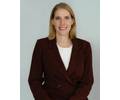Recently the Coast Guard has been responding to rumors that type approval of ballast water management systems (BWMS) that incorporate ultraviolet radiation (UV) as a disinfection process will not be possible under Coast Guard type approval requirements.
These rumors are not true. The Coast Guard has made no decision regarding the general acceptability of UV as a treatment process or the specific acceptability of any UV-based BWMS for purposes of type approval under the Coast Guard's March 2012 Ballast Water Discharge Standard Final Rule.
We believe this misunderstanding has arisen due to differences between the type approval testing that has been conducted in accordance with the International Convention for the Management of Ships' Ballast Water and Sediments adopted by the International Maritime Organization in 2004, and the Coast Guard's type approval testing procedures as established in the Ballast Water Discharge Standard Final Rule, specifically in 46 Code of Federal Regulations (CFR) Part 162.060. Some individuals are under the impression that UV systems with type approval granted by other Administrations on the basis of numbers of “viable organisms” will not pass the Coast Guard’s “living organism” threshold, and therefore cannot be type approved by the Coast Guard.
The Coast Guard is not aware of a validated testing method to determine the viability of the many types of organisms in ballast water after undergoing treatment by a UV BWMS, but during development of the Final Rule the Coast Guard anticipated that new testing methods and approaches would arise over time. Therefore, 46 CFR 162.060-10 (b)(1) allows the Coast Guard to consider proposed alternative approaches to the published testing requirements. In response to requests from UV BWMS manufacturers, the Coast Guard proposed and the EPA ETV Program established, in June 2013, a technical panel to evaluate an alternative method for testing UV BWMS that will ensure an equivalent level of protection consistent with the approach of the current ETV protocol.
The UV technical panel (including representatives from UV manufacturers, Coast Guard, academic and private sector research communities, and BWMS testing facilities) is actively engaged in this effort. Updates on the progress of the panel will be posted on the Coast Guard’s Homeport Ballast Water Management Program web page (https://Homeport.uscg.mil); on the left, click on “Environmental”, then on “Ballast Water Management Program”).


